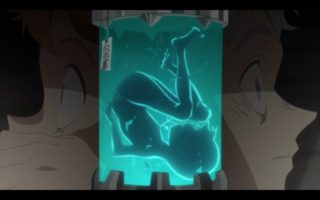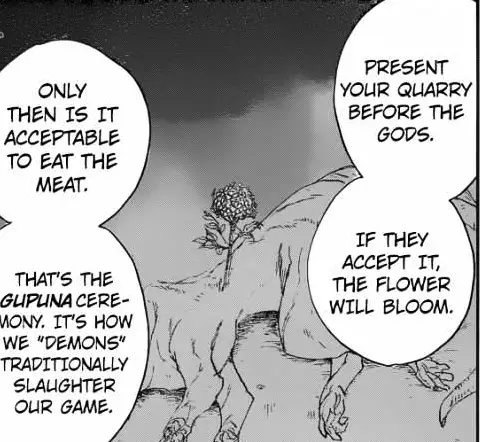

You'll find out the following
- Why a flower was stabbed in Conny?
- What is the ritual "Gupna"?
- The real-life flower that inspired the flower in the Promised Neverland
The first shocking scene of "The Promised Neverland" is the scene in the first episode. It is a scene that Conny, a 6-year-old girl, is shipped to be eaten by a demon. The main character Emma and Norman discover the shipping scene by accident. This is the very moment when every viewer is shocked.


In this scene. if you look at Conny's chest, you can see what looks like a flower stuck in it.
I'd like to explain the meaning of the flower in Conny's chest. What does it mean? Is it just a decoration? Is there any practical purpose?
The flower is a blood-sucking plant called "Vida”
The flower is a vampire plant called Vida. Demons use Vida to remove blood from the body. This flower was also stabbed into the chest of an enemy character named Crone, and it seems that demons have a ritual of piercing Vida on human bodies, regardless of whom they're dealing with, anyway. The main reason is simple.
To remove the blood and preserve it in good condition.
Ordinary wild animals cannot be eaten if their flesh is left at room temperature for a long time. If left as killed it will rot.
How the flower is related to Gupna?
Another purpose of the flower is related to a ritual called Gupna, a ceremony dedicated to the god. According to Sungjoo, it is a traditional way of hurling meat that the demons have been doing for years.
Steps of Gupna:
- Stab an unflowered Vida while the human is still alive
- Vida blooms sucking blood
- When it blooms you may eat the meat
The religious value of Vida is that the blossoming of the flower is a sign that the gods have received meat, a food source, and that it is okay to eat the meat.
In other words, demons never forget to thank God, and the act of stabbing the flower is not an act of playing with it, but to show respect.
Gupna is not performed only on humans, but any devout demon who has strong religious beliefs is likely to perform Gupna on all the living beings he or she has hunted.
The edible children of the high-class plantations where Emma and her friends live are packed in special jars after Gupna and shipped out.
The scene of Conny's shipment was so horrifying and shocking that I thought the demons were cruel enemies who saw humans as mere food, but I think the demons had a sense of gratitude for humans and all living things.
Is there a loss of respect for the lives of demons?
However, the respect the demons had for life, including humans, is now a thing of the past.
As a result of a pact made between the One(the deity of demons) and humanity, the world of demons began to farm children on the plantation, and a stable supply of "food" was realized.
As a result of the mass production of edible children on the plantations, the respect and belief in life were devalued and eventually forgotten.
The sacred act of hunting for life became a pastime for some noblemen, and the "Gupna" increasingly lost its meaning and the faith behind it.
Nowadays, only a few demons seem to practice the original "Gupna".
-

-
Why do demons eat humans (children)[The Promised Neverland]
Why do demons have to eat humans? In volume 120th of the manga, Norman told the reason why demons eat people.
Read more
-

-
Who is William Minerva and is he on Emma's side?[The Promised Neverland]
William Minerva is a man of mystery. He helped the children to escape from the plantation (Grace-Field house) to a safe house.
Read more
What is the model for the flower "Vida"?
Unfortunately, Vida is a fictional flower, so the real flower doesn't exist.

But the model flower is a flower that is commonly found in our world.
The flower's name is "Verbena".
Verbena has the same red color as the Vida flower. And this flower symbolizes "unity".
Because of the way the small flowers like cherry blossoms gather and bloom, verbena is said to have been named after "harmony with family" and "unity".
The artist in charge of drawing the flower in the Promised Neverland, Mr. Posuka Demizu, also liked this concept and said that he chose Verbena as the model flower for Vida.









